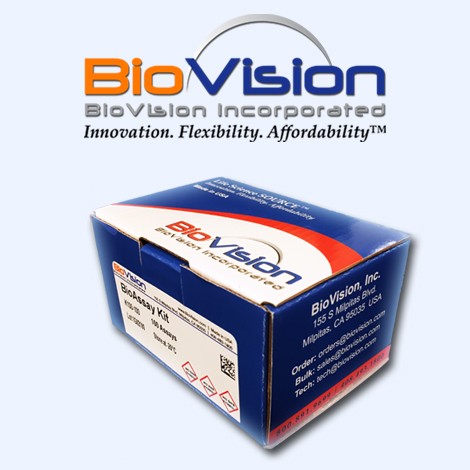Cytosol/Particulate Separation Kit
Datasheet (PDF) | Safety Data Sheets (MSDS)(PDF)
View All Related Products
Description
The location and translocation of proteins, signaling molecules, and other small molecules inside cells regulate cell growth, differentiation and many other cellular functions. Separating cytosol and particulate fractions is an important step in studying subcellular localization of cellular components. However, traditional methods usually take hours to separate cytosol from particulates, so that some cellular components especially small molecules and metabolites are getting diffused or redistributed during the separation procedure. The new Cytosol/Particulate Rapid Separation Kit physically separate cytosol from particulate compatments rapidly through an oil layer and thus the two fractions would not contact or diffuse to each other. Using the method, contaminations can be avoided even for small molecules. Subcellular localization and analyses of factors interested can be performed accurately.
Datasheet
| Cat # +Size | K267-50 |
|---|---|
| Size | 50 assays |
| Species Reactivity | Mammalian |
| Applications | The Cytosol/Particulate Separation Kit provides an easy and convenient system for a rapid separation of cytosol and particulate fractions. Assaying cellular distributions of small moleculars or proteins, and other signal transduction pathways |
| Features & Benefits | • Simple procedure; takes less than 1 hour • Fast and convenient • The new Cytosol/Particulate Rapid Separation Kit physically separate cytosol from particulate compar™ents rapidly through an oil layer and thus the two fractions would not contact or diffuse to each other. Using the method, contaminations can be avoided even for small molecules. |
| Kit Components | • Cell Suspension Buffer • Cytosol Releasing Buffer • Oil Layer • Particulate Layer |
| Storage Conditions | -20°C |
| Shipping Conditions | Gel Pack |
| USAGE | For Research Use Only! Not For Use in Humans. |
FAQ
How to process the tissue for use with this kit?
For tissues grind the tissue in cell suspension buffer / homogenize in the cytosol releasing buffer. Use 2-3 volumes of the tissue volume. The goal is to completely break every cell’s plasma membrane to release cytosol and then simply scale up depending on amount of tissue homogenate and follow the protocol.
Can I still use trypsin to collect my adherent cells or should I just use a cell scraper?
You can trypsinize cells making sure they are not over-trypsinized.
I have a question regarding the particulate fraction that is being separated using this kit. Besides the plasma membrane, does it also contain all the other organelles, e.g. mitochondria, nucleus etc.?
Organelles should be in the particulate fraction.
Can the kit work on bacteria or yeast cells?
The kit has been standardized for mammalian cells only
What is the exact volume of sample required for this assay?
There is no specific volume we can recommend for the amount any sample to be used since it is completely sample concentration and quality based. You have to do a pilot expt with multiple sample volumes to determine the optimal volume which gives a reading within the linear range of the standard curve. Please refer to the citations for this product to see what other clients have used with similar sample types.
Do you have trial sizes of this kit?
Unfortunately, we do not have trial sizes of this kit available. However, if you are based in the US or Canada, we will give you a 10% off list price introductory discount on its purchase price. If you are based out of this area please contact your regional BioVision distributor.
What is the shelf life of this kit?
BioVisions’s assay kits expire 6 months from the date of shipment. Some components of the kit may expire sooner as mentioned in the data sheet
Can we purchase individual components of this kit?
Yes, you can purchase any of the kit's components without the whole kit. Please refer to the component Cat #s mentioned on the datasheet for ordering.
Can we use an alternate buffer for sample preparation (cell lysis, sample dilutions etc
Our assay buffers are optimized for the reactions they are designed for. They not only contain some detergents for efficient lysis of your cells/tissue, but also contain some proprietary components required for the further reactions. Therefore, we highly recommend using the buffers provided in the kit for the best results.
CITATIONS
1. Marni E. Cueno, et al., (2018) Gingival Periodontal Disease (PD) Level-Butyric Acid Affects the Systemic Blood and Brain Organ: Insights Into the Systemic Inflammation of Periodontal Disease, Frontiers in Microbiology, Jun. 2018, 29915575
2. Zhang et al., In Vitro and In Vivo Therapeutic Efficacy of Carfilzomib in Mantle Cell Lymphoma: Targeting the Immunoproteasome. Mol. Cancer Ther., Nov 2013; 12: 2494 - 2504.
3. Esponda P and Carballada R (2009) Mol. Hum. Reprod.; 15: 355 - 361.
4. Wall EA et al (2009) Sci. Signal.; 2: ra28.
5. De Campos Grifoni S et al (2008) Am J Physiol Heart Circ Physiol 10.1152/ajpheart.01271.2007.
 We're here to help
We're here to help
Get expert recommendations for common problems or connect directly with an on staff expert for technical assistance related to applications, equipment and general product use.
Contact Tech Support
 High Quality Guaranteed Product
High Quality Guaranteed Product
Our products such as Elisa, Antibodies, Proteins, Peptides and sequencing kits are covered by Biolinkk quality warranty and will work as described in datasheet, a free replacement or money back is guaranteed if does not perform according to datasheet.
Learn More



